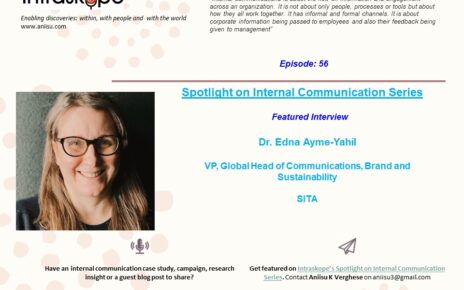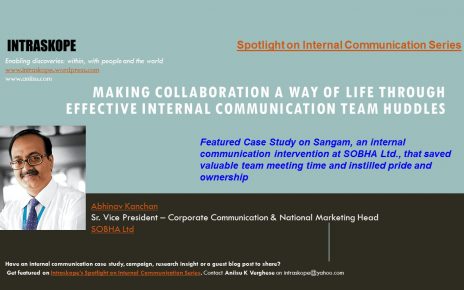There are reports of Atos, a French organization planning to do away with e-mail in the near future. That near future is around the corner. The CEO has stated that after 2014 none of their 80000 employees will be exchanging e-mails.
Ambitious? Crazy? Impossible? Intriguing?
I have been thinking about what this change means for the leader, the organization’s image, their employees and internal communications. Also, what does it take to implement such decisions.
The arguments are definitely strong. Majority of e-mails aren’t relevant. E-mails are distracting. Employees are losing the ‘human’ touch and sending e-mails instead of connecting with each other.
For those who have read the book Switch by the Heath brothers you can see patterns that make wide reaching change work in this experiment by the CEO.
Let me share a bit about the book. The Heath brothers share fascinating real-life examples and research studies which demonstrate how people and organizations overcome resistance, get buy-in and make large scale change easy. Using a simple three part framework they drill down on specific behavior and actions that can improve the chances of driving change. The framework focuses on:
- Directing the Rider (appealing to our rationale side): As an example they share the story of Jerry Sternin working with a non-profit who involved poor Vietnamese mothers to find bright spots among themselves in order to fight malnutrition. In the Atos case, he has built a story on why e-mail is bad and social media is great.
- Motivating the Elephant (addressing our emotional side): They share an example of how a procurement manager created a ‘glove’ shrine to help leaders ‘find the feeling’ on poor internal procurement practices and turnaround. In the Atos case, the CEO is saying – ‘have you lost touch with your personal side? Do you know your family anymore? Get off e-mail’.
- Shaping the Path (making it simple to get to the destination): The way in which websites have made it easier to now transaction online with a single click – take Amazon.com for example. In the Atos case, he is enlisting the support of change agents who can influence others. Also, giving them options for e-mail.
So, in this case what can the leader do more or less of to ensure change happens in a timely manner and yet not alienate staff?
To begin, by making a public statement he has committed the organization and himself to this change. By drawing attention to a deadline there is a goal and timeline for staff to work towards. The news reports already indicate that the program is underway and it evolved due to feedback which came from staff on reducing e-mail. So, it also demonstrates and subtly that the leader ‘listens’ to his people.
The CEO is leading by example and according to the article has not sent out an e-mail in the last three years, which is fascinating.
He has a plan to get to his destination and is shrinking the change and path. He has identified social media tools, chat and collaboration platforms as options to limit e-mail. By enrolling staff (and young staff, mind you – knowing that Gen Y are more open to using social media) and adopting a ‘train the others’ program he is ensuring change is gradual and everyone supports the initiative.
This ‘rally the workforce’ initiative is also a way to get everyone on the same page and aligned to a common purpose.
I believe it is a great example of turning an internal communication challenge into a war cry that engages the workplace. What do you think?


Agree Aniisu,
At Philips too we have “Connect us”, which is an internal social media platform which connects employees from around the globe. Our CEO updates this constantly with important updates about the company, makes sure he congratulates acheivers, posts some personal trivia, all this has helped him connect to employees and definitely drive engagement. Employees interact with him as well. Constant communication like this gives a more ‘personal” touch to the whole engagement activity and I do believe it can drive change. An email is more ‘official’..and a tad more impersonal .